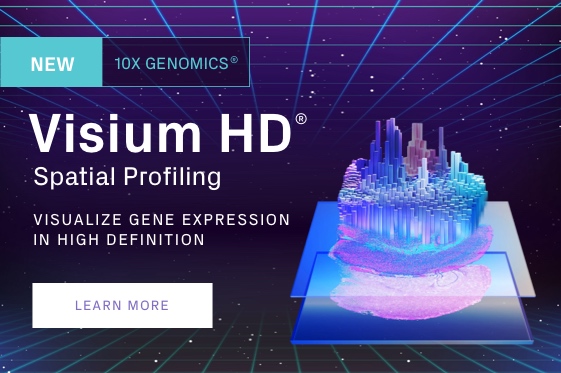Single-Cell Sequencing
Single-cell sequencing provides analysis of thousands of individual cells within complex environments, as opposed to traditional bulk sequencing methods that only provide a representative average of all cells. With developments in microfluidics and molecular barcoding, NGS-based technologies have increasingly focused on single-cell analysis – this has allowed researchers to examine the diversity of heterogenous cell populations and uncover new biological discoveries.
As one of three exclusive 10x Genomics Global Clinical Research Organizations (CROs) and an early adopter of the 10x Genomics® Chromium™ X, Illumina® NovaSeq™ X series, and PacBio® Revio™ systems, we offer single-cell sequencing solutions for various research areas, including transcriptomics, epigenomics, immunogenomics, and more. Our optimized workflows, including pre-submission cryopreservation and post-submission dead cell removal, and specialized Ph.D.-level scientists maximize project flexibility, speed, and data accuracy for precise single-cell sequencing.
What is single-cell sequencing and why does it matter?
Single-cell sequencing is a technology used to isolate and examine nucleic acid sequences—whole genomes or transcriptomes— of individual cells. This method allows for multiomic studies in cellular interactions and analysis of evolving cell populations.
Single-cell sequencing provides a high-quality genomic picture of an individual cell, rather than a broad genomic snapshot from bulk DNA or RNA sequencing of tissue or sample. Single-cell sequencing is important in gene regulation studies and analyzing differences in gene expression between cells. Researchers can greatly benefit from single-cell sequencing in tumor studies and oncology research.
Single-Cell Sequencing Services
Single-Cell RNA-Seq
Analyze transcriptome heterogeneity at the single-cell level. GENEWIZ from Azenta offers optimized workflows for 5’ and 3’ gene expression libraries to uncover cellular differences that are masked by bulk RNA sequencing.
Single-Cell ATAC-Seq
Identify chromatin accessibility in the epigenome by profiling thousands of single cells in parallel, and discover how chromatin structure and DNA-binding proteins regulate gene expression in varying states and cellular processes.
Regulated Single-Cell Sequencing Services
Single-cell processing for all services listed in our GCP-compliant, CAP-accredited and CLIA-certified laboratory environment for clinical applications.
Single-Cell Sequencing Only
Get optimized and flexible NGS for your single-cell libraries using high accuracy Illumina platforms. Designed for researchers who prepare their own single-cell libraries, this service provides high-throughput, high-fidelity sequencing with expert support and rapid turnaround.
SINGLE-CELL sequencing workflow
1. Sample Submission
Sample types include live, cryopreserved and fixed: isolated cells, cultured cells, primary tissue, organoids and more.
2. Sample QC and Cell Partitioning
Assessment of cell counting, viability testing and dead cell removal, when indicated, maximizes sample quality prior to loading. Cells and barcoded beads are then isolated in droplets using the 10x Genomics Chromium X.
3. Library Preparation
Unique barcodes for each individual cell are added to RNA or DNA prior to library preparation. Short-read and long-read library preparation options are available.
4. Sequencing
Barcoded libraries are pooled and sequenced on the Illumina NovaSeq X Plus or PacBio Revio system, as indicated by library preparation, for high-throughput characterization.
5. Data Analysis
Receive custom analysis and visualize results through interactive software. Complimentary Ph.D.-level support is available post-delivery to help drive biological insights.
The GENEWIZ Difference
-
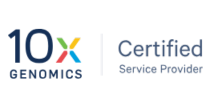
10x Genomics Certified Service ProviderAnd one of three exclusive 10x Global Clinical Research Organizations (CROs)
-
Real-Time Project UpdatesThrough our online system
-
Local language supportIn several European languages, including English, French, German and Spanish
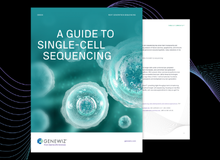
eBook │ A Guide to Single-Cell Sequencing
Whether you’re new to single-cell sequencing or looking to improve your data quality, this eBook provides a comprehensive overview of single-cell sequencing, focusing on how this technology works, optimized approaches to enhance results and use-case applications to help you get the most out of your research.

Blog | Top 3 Factors to Consider Before Starting a Single-Cell Sequencing Project
With several commercial platforms available, high-throughput single-cell sequencing is now more accessible than ever. In this article, we’ll touch upon the 3 most important factors to consider before embarking on your single-cell project to ensure you select the right NGS approach for your research.
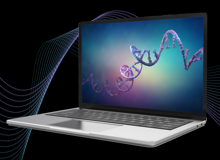
Webinar | Expanding Opportunities for Single-Cell RNA Sequencing
Single-cell sequencing can be a powerful tool used to discover new targets for therapeutic development. In this webinar, co-sponsored by GENEWIZ from Azenta and 10x Genomics, learn about the latest developments in single-cell technologies and their use in uncovering novel therapeutic discoveries.
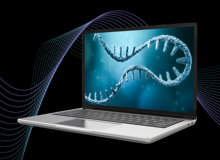
Webinar Series | Advancing Transcriptomics: Gene Expression Screening, Single-Cell RNA-Seq, and Beyond
With this two-part webinar series, go beyond traditional transcriptomics and learn about the various NGS approaches available for gene expression analysis. In part 1, we take an in-depth look at various gene expression approaches, including RNA-Seq, single-cell RNA-Seq, digital spatial profiling, and more. In part 2, we explore the data generated from these approaches and how they can complement each other and confirm findings.
NGS Platforms
For information on our NGS platforms as well as recommended configurations of your projects, please visit the NGS Platforms page. GENEWIZ from Azenta does not guarantee data output or quality for sequencing-only projects.





